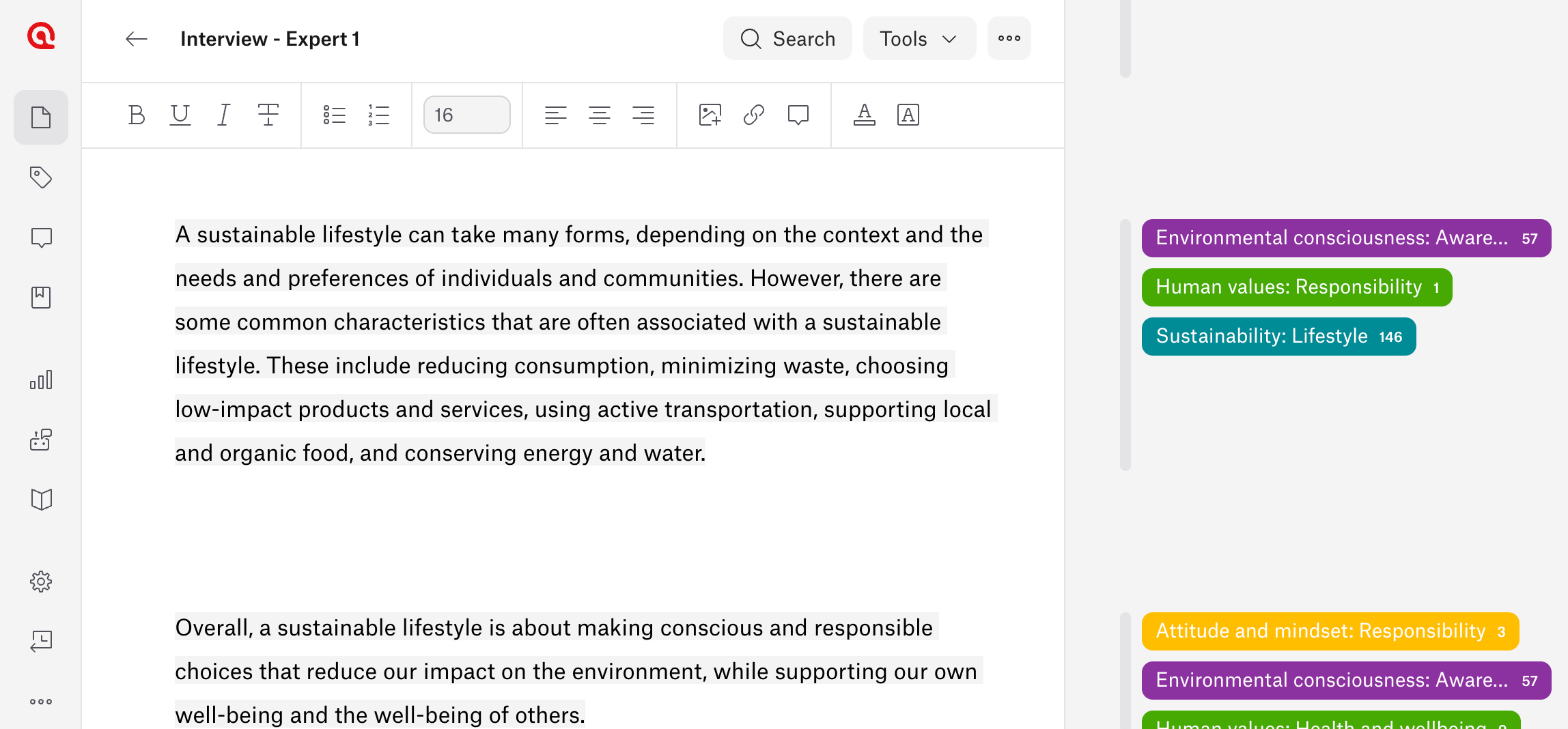Essential Tools Every Researcher Should Know About
- Introduction
- What resources should you use for research?
- What should you look for in a research tool?
- How to choose the right tool for your research
- Tips for maximizing the use of research tools
Introduction
The right tools for researchers can significantly enhance productivity and accuracy in research. Researchers today have access to a wide range of resources that simplify every stage of the research process, from organizing tasks to analyzing data. Choosing the appropriate tools not only streamlines workflows but also helps ensure that research is conducted efficiently and effectively.
This article will explore various tools that are essential for researchers, covering everything from project management and note-taking to specialized software for data analysis. Understanding and utilizing these tools can make a significant difference in the quality and impact of your research.

What resources should you use for research?
Selecting the right tools is crucial for managing the complexities of research. Whether you are organizing your tasks, collecting data, or analyzing results, the tools you use can greatly impact the efficiency and success of your project.
Below are some key resources that researchers should consider incorporating into their workflow.
Project management tools
Project management tools like Asana and Trello are indispensable for organizing research tasks, tracking progress, and facilitating collaboration among research teams. These platforms allow you to break down large projects into manageable tasks, assign responsibilities, set deadlines, and monitor the completion of each step.
For researchers working in teams, project management tools provide a clear structure, ensuring that everyone stays on the same page and that no task falls through the cracks. Additionally, these tools often integrate with other platforms, making it easier to connect your research with other aspects of your work, such as communication and file storage.

Note-taking and organization tools
Effective note-taking and organization are essential for any research project, particularly when dealing with large volumes of information. Tools like Evernote and Notion allow researchers to organize their notes, ideas, and references in a systematic way. These platforms offer features like tagging, search functionality, and hierarchical organization, which make it easier to retrieve information when needed.
Digital note-taking tools also allow for the integration of multimedia elements, such as images, links, and audio recordings, providing a richer context for your notes. This can be particularly useful during the literature review phase or when conducting field research.

Literature search tools
Finding relevant scholarly literature is a foundational step in any research project. Tools like Google Scholar, JSTOR, and PubMed provide access to a vast array of research articles, journals, and papers across various disciplines. These platforms offer advanced search features, allowing researchers to filter results by publication date, citation count, and specific keywords.
Google Scholar, for instance, also provides alerts for new research in your area of interest, ensuring that you stay updated with the latest developments. Utilizing these tools can save significant time and effort, helping you quickly identify the most relevant sources for your research.

Reference management tools
Managing citations and references is a critical but often tedious aspect of research. Tools like Zotero, EndNote, and Mendeley simplify this process by allowing you to collect, organize, and format your references automatically. Reference management software integrates literature collection with word processing software, making it easy to insert citations of academic papers, web pages, and other resources as you write and automatically generate bibliographies in your desired citation style.
Reference management tools also offer features like PDF storage and annotation, enabling you to keep all your source materials in one place. This not only streamlines the writing process but also helps ensure that your references are accurate and complete.
Data collection tools
The data collection phase of research can vary widely depending on the nature of the study, but online tools like SurveyMonkey and Qualtrics are commonly used for gathering quantitative and qualitative data through online surveys. These platforms allow you to create and distribute surveys, questionnaires, and forms, with features that support complex question logic, randomization, and real-time data analysis.
SurveyMonkey, for example, offers customizable templates and options for reaching a broad audience, making it easier to collect large amounts of data efficiently. Such tools are invaluable for ensuring that the data you collect is structured, comprehensive, and ready for analysis.

Qualitative data analysis software
For researchers dealing with qualitative data, robust digital tools for analysis like ATLAS.ti is essential. ATLAS.ti supports the organization and analysis of complex qualitative data, whether it’s in the form of interviews, focus group discussions, or textual documents. The software allows researchers to code and categorize data, identify patterns and themes, and generate reports that highlight key insights.
One of the strengths of ATLAS.ti is its ability to handle complex research projects with large datasets, multimedia files, and research notes while offering a user-friendly interface that simplifies the analysis process. By using ATLAS.ti, researchers can ensure that their qualitative data is analyzed systematically, leading to more nuanced and credible findings.

Quantitative data analysis tools
Quantitative data analysis requires tools that can handle statistical computations and data manipulation. Software like SPSS, R, and Python are widely used in the research community for tasks such as data cleaning, hypothesis testing, and regression analysis.
These tools offer a range of features, from basic descriptive statistics to advanced modeling techniques, making them suitable for researchers with varying levels of expertise. For those who need to visualize their data, these tools also provide options for creating graphs, charts, and tables that can help convey your findings more effectively.

Visualization tools
Data visualization tools help communicate research findings in an accessible manner. Tools like Tableau and Microsoft Power BI allow researchers to create interactive visualizations that make complex data more accessible and understandable in research papers and presentations.
These platforms offer a range of visualization options, from simple bar charts to complex geographic maps, enabling you to present your data in a way that best suits your research objectives. Visualization tools are particularly useful for researchers who need to present their findings to non-specialist audiences, as they can help bridge the gap between complex data and clear, actionable insights.

What should you look for in a research tool?
Choosing the appropriate research tools can significantly influence the success and efficiency of your project. With numerous options available, it's important to consider various factors to ensure that the tools you select align with your specific research needs.
Here are some key criteria to consider when evaluating research tools.
Ease of use
A tool's usability is crucial, especially for researchers who may not have a technical background. The interface should be intuitive, with features that are easy to navigate without requiring extensive training. Tools that are simple to use allow you to focus more on your research rather than on learning how to use the software.
For instance, ATLAS.ti is designed with a user-friendly interface that simplifies the process of qualitative data analysis, making it accessible even for those who are new to this type of research. When evaluating a tool, consider how quickly you can start using it effectively and whether the learning curve might impede your progress.
Compatibility
Compatibility is another important factor when choosing research tools. The software you use should integrate seamlessly with other tools and platforms in your research workflow. For example, if you are using a specific word processor or data analysis software, ensure that your chosen tool can easily export and import data between these applications.
ATLAS.ti, for instance, supports integration with various data sources and can work alongside other tools like Microsoft Word or Excel. This compatibility minimizes disruptions in your workflow and allows you to move smoothly from one stage of your research to the next.
Collaboration features
Research often involves collaboration, whether you're working with a team of colleagues or sharing your findings with a broader audience. Tools with strong collaboration features can enhance the efficiency of your project by facilitating communication, data sharing, and joint analysis. Look for tools that allow multiple users to work on the same project simultaneously, track changes, and provide feedback.
ATLAS.ti offers features that support collaborative analysis, enabling researchers to work together on coding, annotation, and interpretation of data. These features are particularly valuable in interdisciplinary research, where team members may have different areas of expertise and need to contribute their insights effectively.
Security and data protection
The security of your research data is paramount, particularly when dealing with sensitive or confidential information. It's essential to choose tools that comply with industry standards for data protection and offer robust security features. This includes data encryption, secure user authentication, and regular software updates to protect against vulnerabilities.
ATLAS.ti prioritizes data security, ensuring that your qualitative data is stored and processed securely. When selecting a research tool, verify that it adheres to data protection regulations, such as GDPR or HIPAA, if applicable to your research.
Cost and accessibility
While some research tools are available for free, others may require a significant financial investment. It's important to weigh the cost of a tool against its benefits and consider whether it fits within your budget. Keep in mind that some tools offer tiered pricing plans, which can provide more affordable options for individual researchers or small teams. Additionally, consider the accessibility of the tool—whether it offers student or educational discounts, and whether it supports multiple languages or platforms.
ATLAS.ti, for example, provides different pricing models that cater to various types of users, making it accessible to a wide range of researchers. Always consider the long-term value of a tool in relation to its cost, and whether it will provide the features you need as your research evolves.
Support and updates
Reliable customer support and regular updates are vital for maintaining the functionality of your research tools. Choose tools that offer strong customer support, with resources like tutorials, user forums, and direct help options. This can be particularly important when you encounter technical issues or need assistance with advanced features.
ATLAS.ti, for example, offers comprehensive support resources, including tutorials, webinars, and a responsive helpdesk. Additionally, tools that are regularly updated with new features and security patches will remain relevant and secure over time. When evaluating a tool, consider the level of ongoing support and the frequency of updates to ensure that it will continue to meet your needs throughout your research project.
How to choose the right tool for your research
Selecting the right tools for your research is a critical decision that can affect every stage of your project. With a wide range of options available, it can be challenging to determine which tools will best meet your needs.
Here are some strategies to help you choose the right research tools.
Define your research needs
The first step in choosing the right tool is to clearly define your research needs. Consider the specific requirements of your project, such as the type of data you will be collecting and analyzing, the size and scope of your research, and the timeline you are working with. For example, if your research involves extensive qualitative data, a tool like ATLAS.ti, which is designed for in-depth qualitative analysis, would be essential.
On the other hand, if your project requires managing large datasets and performing statistical analysis, you might need to look into tools that are more focused on quantitative methods. Defining your needs upfront will help you narrow down your options and focus on tools that are tailored to your project.
Trial and error
Once you have a clear understanding of your research needs, it’s important to test different tools before making a final decision. Many research tools offer free trials or demo versions that allow you to explore their features and assess their suitability for your project. During this trial period, try to replicate key aspects of your research workflow to see how well the tool integrates with your existing processes.
Pay attention to how intuitive the tool is, how easily you can navigate its features, and whether it provides the functionality you require. For instance, if you are considering ATLAS.ti for qualitative analysis, use the trial period to upload sample data, experiment with coding, and explore the reporting features. Trial and error can be a valuable process, helping you avoid the pitfalls of committing to a tool that may not fully meet your needs.
Seek recommendations and reviews
Another effective way to choose the right research tool is to seek recommendations from colleagues, peers, or experts in your field. Researchers who have used certain tools in similar projects can provide valuable insights into the strengths and limitations of those tools. Additionally, online reviews, user forums, and academic communities can be rich sources of information. When reading reviews, look for comments on the tool’s performance, ease of use, and customer support, as well as any common issues or challenges users have faced.
It’s also useful to join discussions in academic or professional networks where researchers share their experiences and tips on using various tools. Recommendations and reviews can give you a better understanding of how a tool performs in real-world research settings, helping you make a more informed decision.

Tips for maximizing the use of research tools
Once you have selected the right tools for your research, the next step is to ensure that you are using them to their fullest potential. Maximizing the effectiveness of these tools can enhance your productivity, streamline your workflow, and improve the overall quality of your research.
Here are some tips for getting the most out of your research tools.
Training and tutorials
Even the most intuitive tools require some level of training to use them effectively. Taking advantage of the training resources provided by the tool’s developers can significantly improve your efficiency and confidence. Many tools, including ATLAS.ti, offer extensive tutorials, webinars, and user guides designed to help you master their features. These resources are often available for free and can provide valuable insights into advanced functionalities that you might not discover on your own.
For example, ATLAS.ti offers video tutorials that guide you through complex tasks such as coding qualitative data, generating reports, and visualizing patterns. By investing time in training, you can ensure that you are fully equipped to leverage the tool’s capabilities, leading to more insightful and comprehensive research outcomes.
Customizing tools to fit your workflow
One of the most powerful aspects of research tools is their ability to be customized to fit your specific workflow. Many tools allow you to tailor features, layouts, and settings to better align with the way you work. For instance, in ATLAS.ti, you can customize the coding system, create specific code groups, and set up personalized workspaces that match your research focus.
Customization not only makes the tool more user-friendly but also helps you maintain consistency and organization throughout your project. Take the time to explore the customization options available and adapt the tool to suit your needs. Whether it’s setting up templates, adjusting default settings, or creating shortcuts for frequently used functions, these small adjustments can have a big impact on your productivity.
Staying updated with new features
Research tools are constantly evolving, with developers regularly releasing updates that introduce new features, improve existing functionalities, and enhance security. Staying updated with these changes is crucial for maximizing the effectiveness of your tools. Subscribe to newsletters, follow the tool’s blog, or join user communities to stay informed about the latest updates and how they can benefit your research.
For example, ATLAS.ti frequently introduces new features that can streamline data analysis or offer new ways to visualize your findings. By keeping up with these updates, you can take advantage of the latest innovations and ensure that your research methods remain cutting-edge. Additionally, staying informed about updates can help you avoid potential compatibility issues and ensure that your tool continues to meet your research needs.
Integrating tools for a seamless workflow
While each research tool has its own strengths, integrating multiple tools can create a seamless workflow that enhances overall productivity. Many research tools are designed to work together, allowing you to transfer data, share insights, and collaborate across platforms. For example, you can integrate ATLAS.ti with reference management tools like Zotero to streamline the process of organizing and citing sources like conference papers, peer-reviewed articles, and other important research materials.
Similarly, integrating data collection tools with analysis software can reduce the time spent on manual data entry and minimize errors. When setting up your research workflow, consider how different tools can complement each other and create a more efficient research process. This integration can save you time, reduce redundancies, and allow you to focus more on the substantive aspects of your research.
Regularly reviewing and refining your tool usage
As your research progresses, it’s important to periodically review how you are using your tools and make adjustments as needed. This might involve revisiting your initial customization choices, exploring new features that have been introduced, or even re-evaluating whether the tool is still the best fit for your evolving project. Regular reflection on your tool usage can help you identify areas where you might be able to improve efficiency or enhance the quality of your analysis.
For instance, if you notice that a particular feature in ATLAS.ti is underutilized, consider whether additional training or customization could make it more useful in your research. By staying proactive and flexible in your approach, you can continuously optimize your tool usage and ensure that it remains aligned with your research goals.



